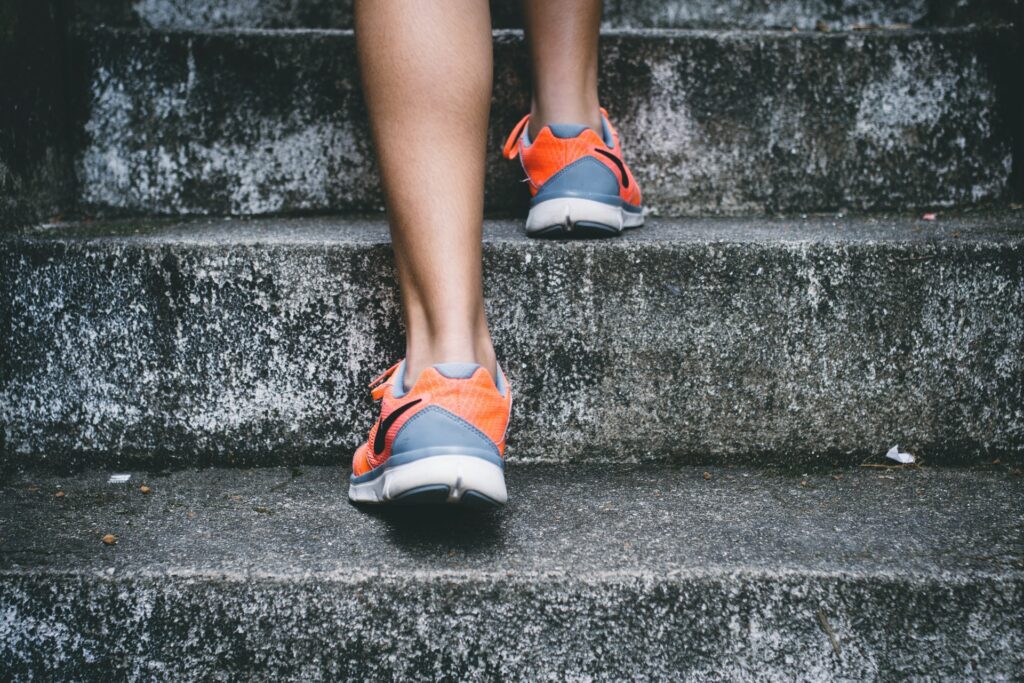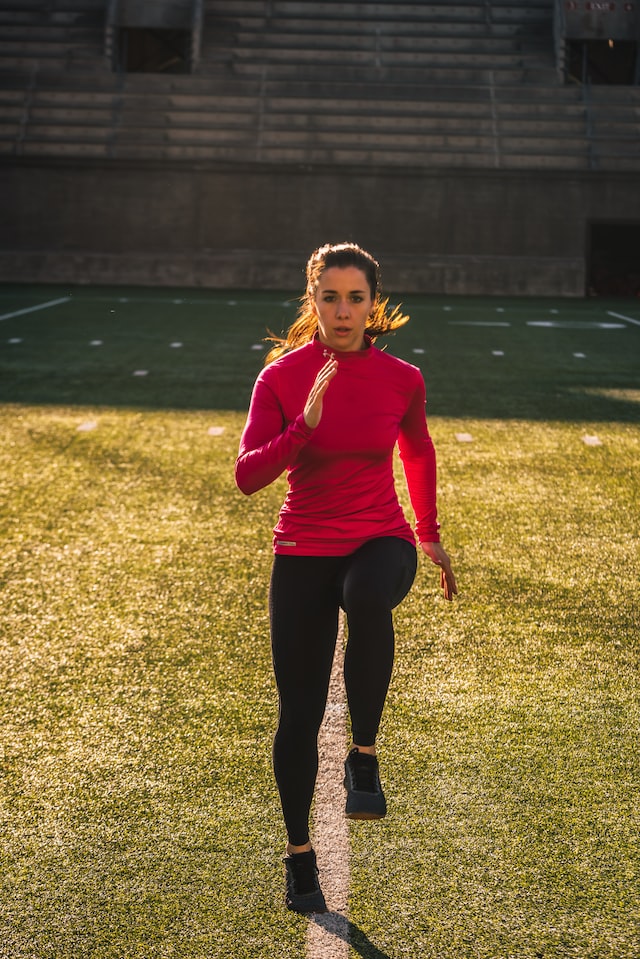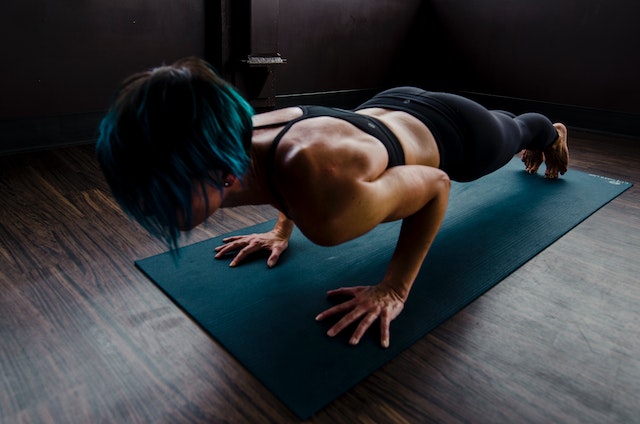Physical exercise plays an important role in achieving happiness and health. Besides making your body stronger, it also makes you feel more confident and has many mental health benefits. Exercise has also been shown to help with anxiety and depression.
In this article, we break down the importance of exercise and being active, and its physical and mental benefits.
Mental Health Benefits of Exercise — How Exercise Benefits The Brain & Mind
Stress and anxiety may start in the mind, but can wreak havoc on your body.

According to the American Psychological Association, “Stress affects all systems of the body including the musculoskeletal, respiratory, cardiovascular, endocrine, gastrointestinal, nervous, and reproductive systems.”
And, there is more that science has uncovered about the mental health benefits of exercise.
Reduces Anxiety and Stress – How exercise benefits the brain
Exercise and physical activity improves your blood flow and introduces more oxygen into your cells. This has a direct positive effect on your brain and cognitive abilities. By using exercise to produce more endorphins in your brain and activate the feel-good chemicals, you stimulate a natural “runner’s high” which is the chemical opposite of anxiety and worried brain states.
There is evidence that exercise helps reduce anxiety symptoms significantly. In fact, a review of a number of studies has shown that higher levels of physical activity are associated with lower levels of anxiety.

With a consistent exercise regime, you’re able to better manage anxiety and stress, which improves the quality of your life.
Managing Depression with Exercise
Interestingly enough, exercise seems to be effective at treating depression symptoms too. Its effectiveness has been compared with pharmacotherapy and psychotherapy.
If you’re struggling with depression, exercising frequently can help alleviate your symptoms and give you more confidence. Just start small and don’t be concerned about how long or how intense the exercise should be. Specific to depression treatment, the duration and intensity of exercise are less important.
Increasing Productivity with Exercise
Exercise can assist you in reaching your long-term goals by helping with your productivity and resilience. According to a study conducted by three universities in the UK, employees who exercised on workdays were found to be more productive and had better moods. They could better deal with higher workloads.
Exercise also increases your brain’s production of endorphins. Together with the physical changes happening within your cells, you begin to literally produce more energy on a cellular level.
When you feel good, you’re able to tackle the problematic aspects of life and achieve your goals, creating a positive loop of productivity. With boosted productivity, you’ll start to feel good, achieve your goals, and live a more balanced life.
Try this Program for Free
Bodyweight Basics with The School of Calisthenics
Exercise anywhere with no equipment and become fitter. Sleep better, think faster, and become a better you.
Disclosure: We earn a commission from qualifying purchases. But this doesn’t affect the quality of our recommendations.
Now that we’ve covered some mental health benefits of exercise that are backed by science, what about the physical benefits?
What are the physical benefits of exercise?
There are numerous physical benefits to working out.

Exercising consistently can:
- Increase your energy and vitality
- Reduce your risk of diseases, like diabetes and cardiovascular disease
- Lower your risk of certain cancers
- Strengthen your mental resilience, leading to less aggressive behaviour
- Strengthen your bones and muscles
- Improve your balance and stability (especially if you’re older)
- Help with weight loss
- Improve sex life
Remain healthy and prevents diseases and cancers
Physical activity and exercise have attractive health benefits, such as reducing the risk of heart disease and type 2 diabetes. It also lowers your risk of various cancers like bladder, breast, and colon. What’s more — for those with high blood pressure, exercise reduces your resting blood pressure.
Boost energy levels and relieve chronic symptoms (including fatigue)
According to a recent review of several studies, “moderate-intensity exercise interventions of at least 6 weeks” can be beneficial in alleviating fatigue and restoring energy in people (including those with long-term health conditions). Some of the health conditions studied are known to induce fatigue like multiple sclerosis and fibromyalgia.

Physical exercise was also found to alleviate chronic disease symptoms, ultimately improving quality of life. Some of these diseases include osteoarthritis, coronary artery disease, chronic kidney disease, lung cancer, and diabetes.
What kinds of exercises are suitable for people with chronic health conditions?
So, even if you suffer from a chronic health condition, you can benefit from a light to moderate workout routine. And it seems you’d be able to see results in energy levels in as little as 6 weeks.
In general, activities like low-intensity Tai Chi, yoga, pilates, swimming and walking can be safe and helpful for those with chronic health issues.
Even intense workouts can be good. A few studies have shown that HIIT (High-Intensity Interval Training) can help people recovering from lung cancer (post-operation). You should, however, seek medical advice from your doctor or physiotherapist, as they will have the best knowledge of your health.
Retain balance, stability, and independence in older adults
Exercise and regular workout routines are proven to benefit your balance and stability. This is especially crucial for older adults. Improving your coordination and reducing your risk of falling can give your everyday life a boost. It will also enable you to live independently and freely.

What kinds of exercises help with balance & coordination?
The activities highlighted by the studies include Tai Chi, walking on a treadmill, VR (Virtual Reality) games, step aerobics, and stability ball exercises. Also, it appears that you need 8 to 12 weeks of consistent training.
Tackle insomnia and sleeplessness
In 2019, researchers found that resistance exercise and stretching vastly improved sleep in chronic insomniacs. Similar results were found in a 2012 review of exercise’s impact on sleep for adults over 40 who were sleeping poorly.
What kinds of exercises help with insomnia and sleep?
Several studies, including this one, have found that moderate exercise three times a week over at least three to six months improves sleep. And, the exercises and physical activity in those studies include Tai Chi, yoga, and resistance training.
Suffering from insomnia, find out how to fall asleep effectively with some tips and a bedtime routine.
Try this Program for Free
Bodyweight Basics with The School of Calisthenics
Exercise anywhere with no equipment and become fitter. Sleep better, think faster, and become a better you.
Disclosure: We earn a commission from qualifying purchases. But this doesn’t affect the quality of our recommendations.
The bottom line: Boost your mental & physical health and productivity
Looking after your body through exercise and being physically active improves the quality of your life. It helps you live longer, remain independent, and become more productive towards your goals.
Exercise can also work as an effective natural treatment for mental health conditions like anxiety and depression. And, it is effective against insomnia.
Start becoming more physically active and manifest the kind of life you want.
Redefine your reality & life
Whether it’s for guided meditation or better sleep, check out our store.

